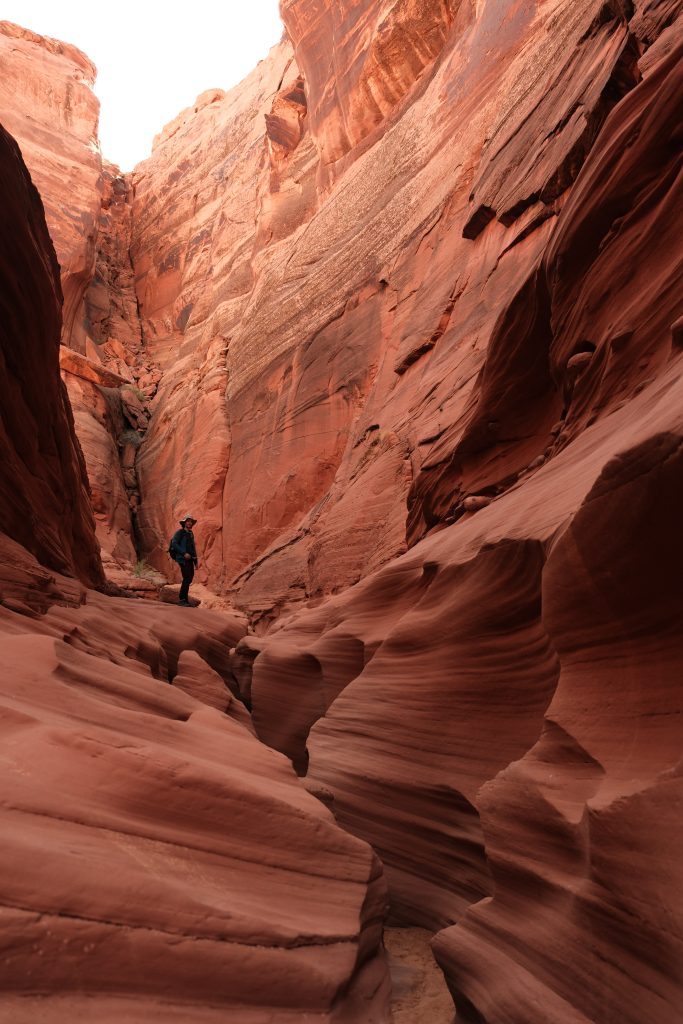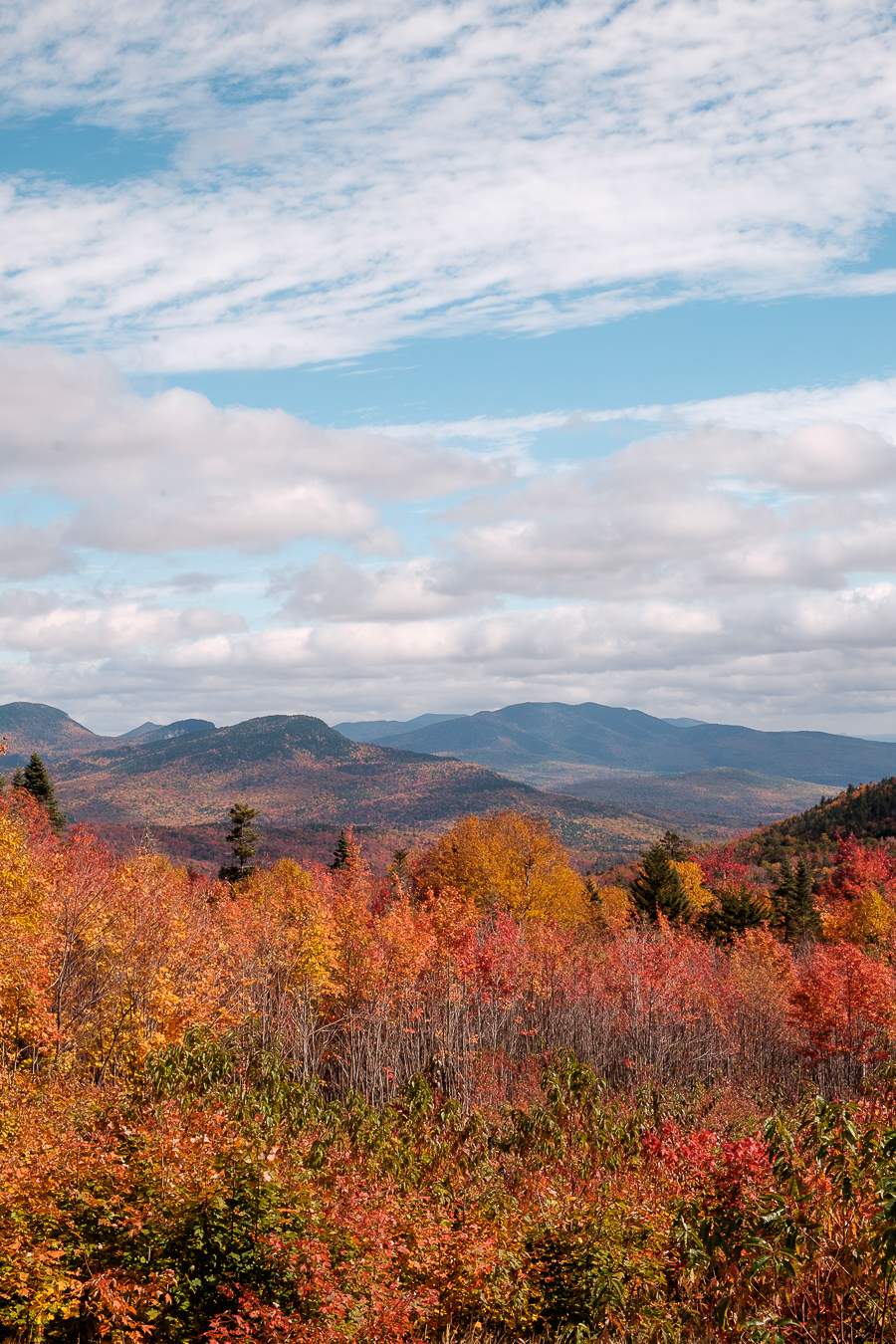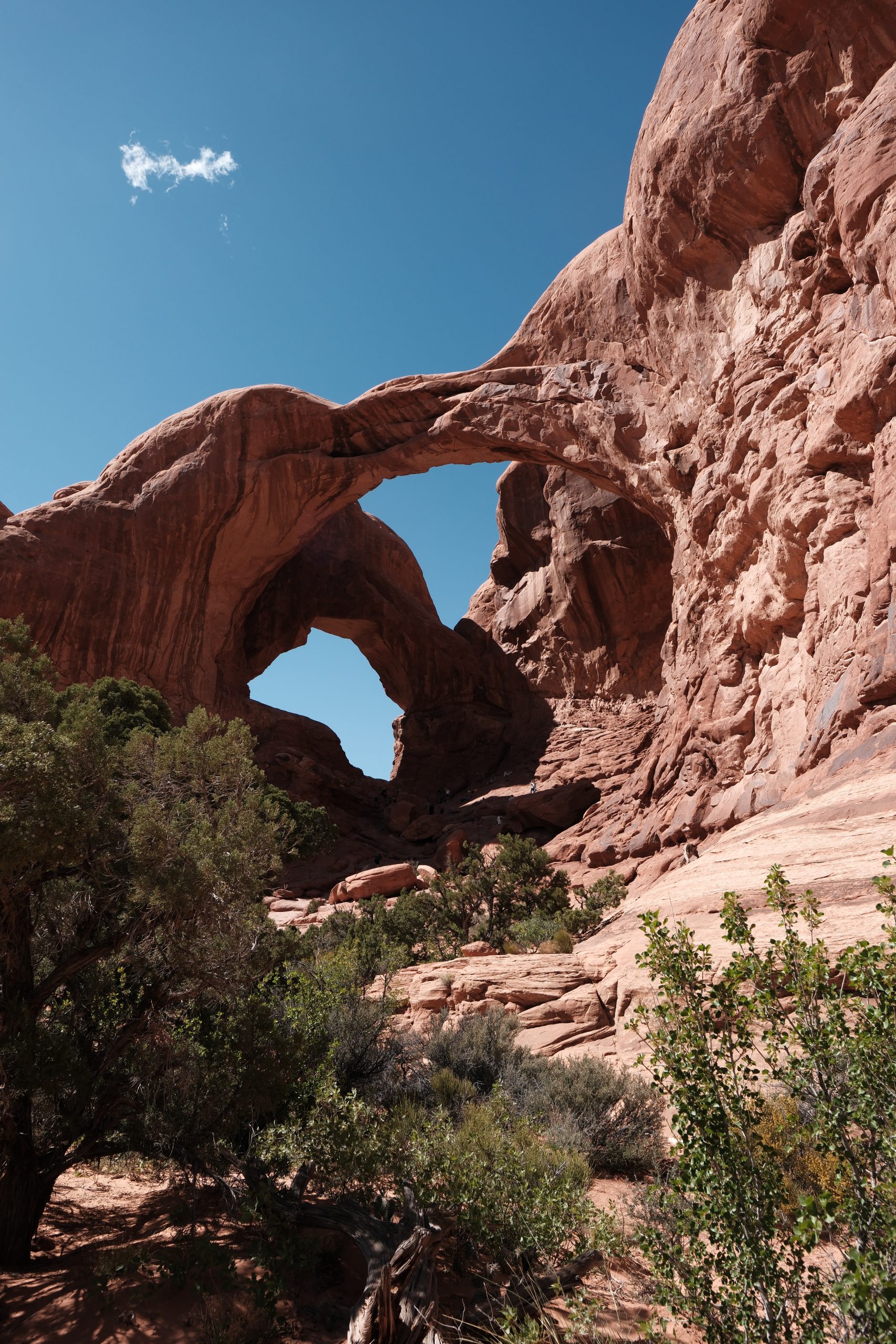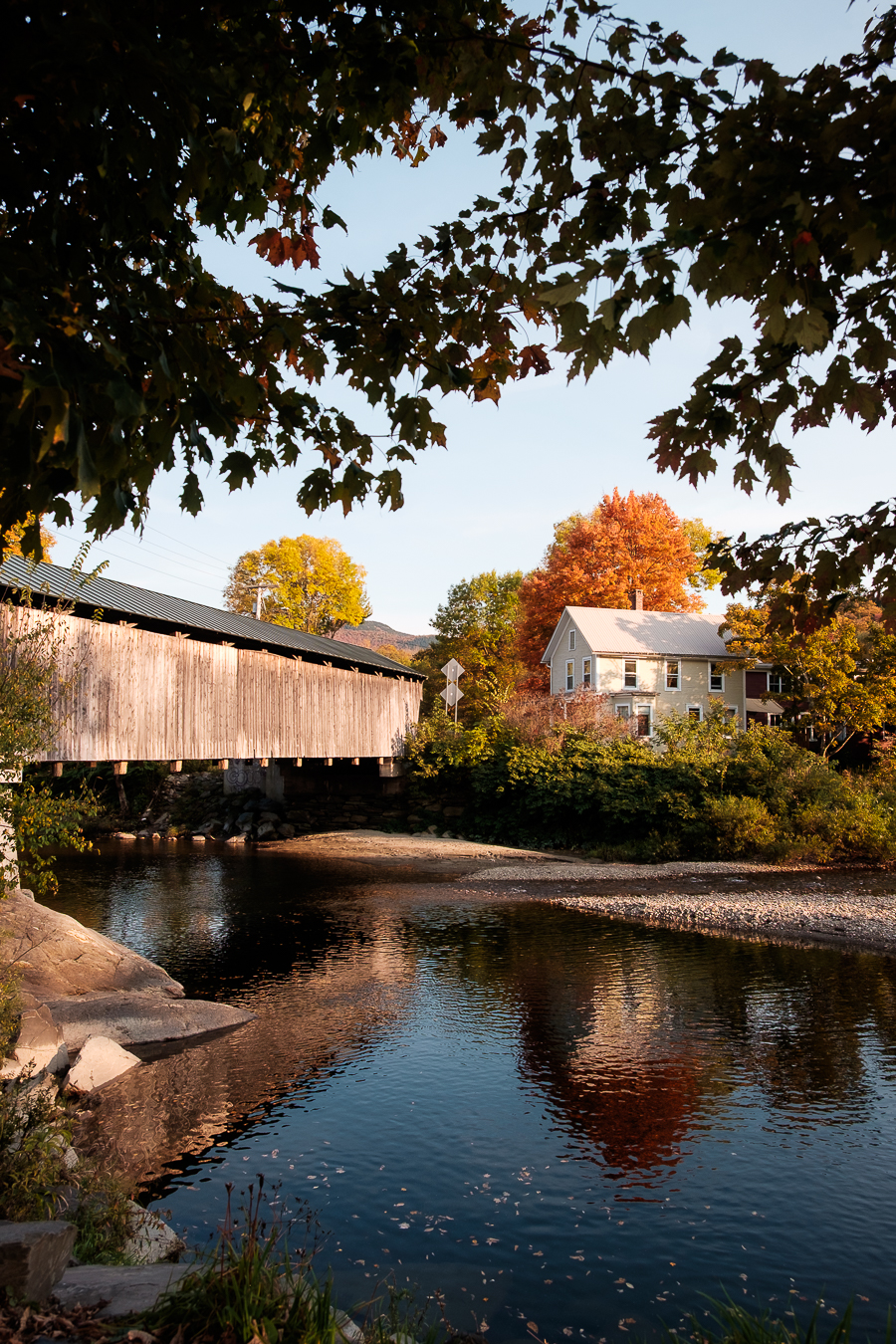Antelope Canyon, located on Navajo land in Arizona, is one of the most iconic and impressive slot canyons in the United States. The main section, famous for its swirling red rock walls illuminated by beams of sunlight, requires a permit and a guided tour, which can be expensive and often books out months in advance. But there’s a lesser-known, more adventurous way to experience this natural wonder where you kayak into a secluded section of Antelope Canyon via Lake Powell. No permit, no guide, and no crowds.
Whether you’re an experienced paddler or just looking for an off-the-beaten-path experience, this is one of the best ways to explore Antelope Canyon.
Here’s everything you need to know about how to kayak to Antelope Canyon.
Check out our other guide: USA national parks road trip itinerary
Where is Antelope Canyon?
Antelope Canyon is near the town of Page, Arizona, within the Lake Powell Navajo Tribal Park. Most visitors go on guided tours of the upper or lower canyon, where slivers of light illuminate the narrow sandstone walls, a scene that has become world-famous on social media. These tours can cost up to $90 per person.
However, there’s an alternative section of the canyon that you can access by kayak or stand-up paddleboard (SUP) from Lake Powell. This route requires no permits, no guides, and no entrance fees. While this is not the same area as the guided tours, it still features the striking, narrow canyon walls and beautiful orange-red hues that make Antelope Canyon so unique.
Important: This route is entirely legal and does not trespass on protected Navajo land. You won’t reach the most photographed sections, but you’ll enjoy a peaceful alternative without the crowds.
Why kayak to Antelope Canyon?
Avoid the crowds
Visitors to the guided section of Antelope Canyon often mention it being ‘overcrowded’, ‘packed with people’, and ‘rushed’. While the tours are still considered an excellent option for seeing the canyon, kayaking offers a far more tranquil experience. We started paddling at 7.30 a.m. and had the canyon to ourselves for hours. When we left around 11 a.m., a few more people had begun to arrive.
The journey is half the fun
Paddling across the calm waters of Lake Powell is an adventure in itself. On clear days, the lake perfectly mirrors the canyon walls. As you move deeper into the canyon, the towering rock walls close in, and the atmosphere becomes even more magical.
Two experiences in one
Kayaking to Antelope Canyon offers a dual adventure: first, a peaceful paddle on Lake Powell, and then a hike into the canyon on foot. Pulling your kayak onto a quiet beach before exploring the slot canyon by land adds an extra layer of exploration that tours don’t offer.
No reservation needed
Guided tours can sell out months in advance. If you’re visiting on short notice or prefer not to pay $90+, kayaking is a flexible, budget-friendly option. Just rent a kayak or bring your own non-motorized watercraft.
When not to kayak to Antelope Canyon?
You’re not physically able to kayak
The route requires paddling around 2 hours in total. On calm days, it’s manageable for most fitness levels, but windy weather or boat traffic can make conditions more challenging. You’ll also need to carry your kayak down a launch ramp and over a rocky shoreline.
You want to see the most famous section of Antelope Canyon
If your goal is to photograph the iconic light beams and ultra-narrow canyon walls, a guided tour is your best bet. The kayaking route does not connect to the famous upper and lower sections of Antelope Canyon. But like we said, you will still get to experience a similar landscape.
You’re short on time
The full kayaking and hiking trip takes at least 5 hours. Guided tours typically last around 90 minutes, so they’re a better choice if you’re on a tight schedule.
The route to Antelope Canyon
The best place to start the kayak is from Antelope Point Launch Ramp. You can also start from Antelope Point Marina & RV Park, but this will require you to kayak further.
From the launch ramp you will paddle south until you reach a narrow inlet on your left – this will take you into the canyon. From there, you paddle through the canyon until where the water stops and you see a beach.
You can leave your kayak on the beach and begin the hike deeper into the canyon. The length of the hike is slightly ambiguous, but we recommend walking to where the trail forks – about an hours walk. By this point you will have already walked through the most impressive part of the trail, but if you want to continue to the end you can.
On All Trails the route is called Antelope Creek Paddle Route and is 18.7km in length all the way from the launch ramp to the very end of the walking path (beyond where it forks).

How much time do you need at Antelope Canyon?
We recommend budgeting at least 5 hours for the full experience:
1.5 hours: Launch and paddle to the canyon, including photo stops
2 hours: Hike in and out of the canyon
1.5 hours: Paddle back to the marina and take out kayak


Step by step guide to kayaking Antelope Canyon
1. Rent or bring a kayak
You can rent single or double kayaks and SUPs in Page. We used WazSUP Kayaks, which opens early (from 7 a.m.), but many rental shops are available to compare prices and hours. Most will deliver the kayaks to Antelope Point Launch Ramp.
If you prefer company, guided kayak tours are also available.
You can use your own non-motorised watercraft – kayak, SUP, rowing boat – to get to Antelope Canyon too.
Some motor boats try to go down the canyon, however, it is really not recommended because it’s so narrow.
2. Launch from Antelope Point
As noted, you should launch your kayak from Antelope Point Launch Ramp. Most if not all rental shops will deliver your kayak to this point at the time you select. Some do not take the kayaks down to the water though, which means you will have to carry it a little way down a hill and over a rocky beach before reaching the water.
The launch ramp has a large free parking lot to leave your car.
3. Kayak to the Canyon
Once in the water you will begin your kayak to Antelope Canyon along Lake Powell. The first section of the lake is wide and at times there will be many motorised boats which means that there can be wind and waves. It’s about a 30 minute kayak until you reach an inlet on the left hand side.
The inlet is narrower and the rock walls are taller. The water is calmer in this section and reflects the rocks perfectly. It gets narrower the further you kayak into the inlet creating very dramatic scenery. Kayak along this section for another 30 minutes basically until the water stops and you see a beach.
Once at the beach, pull your kayak up on to the beach. You may see other kayaks here lined up to the side and you can put yours closely next to them so that there is enough room for everyone. It’s safe to leave your life vests, paddles and water shoes (if wearing them) in the kayak.
4. Hiking the Canyon
From the beach, hike into the canyon on foot. The trail starts wide but narrows quickly into dramatic slot canyon scenery. Hike until the trail forks about 45 minutes to 1 hour. This section features the most impressive rock formations. You can continue to the end, where the trail eventually dead-ends, but you will have already seen the best part of the canyon.
Total recommended time for hiking: 2 hours round trip, including photo stops and water breaks.
5. Kayak back
Allow about an hour to paddle back to the launch ramp, less if the current is with you.
When you reach the marina, bring your kayak out of the water and leave it wherever you have been directed to by the rental company.
What to bring
Kayak/SUP, paddle, life vest – Provided by rental companies
Dry bag – To protect valuables from splashes
Water shoes – For getting in/out of the water (sandals, Crocs, or water shoes)
Hiking shoes/sandals – The canyon floor varies from sand to rocks
Water – It gets very hot; bring plenty
Snacks or picnic – To keep your energy up
Sun protection – Sunscreen, hat, and lightweight sun clothing
Frequently Asked Questions
- Where is Antelope Canyon located?
It’s in northern Arizona near Page, accessible by land (hiking) and water (kayaking or boating from Lake Powell). - Can I kayak all the way to Antelope Canyon?
Yes, from Antelope Point Launch Ramp on Lake Powell, you can kayak into the water-filled section of Antelope Canyon, then hike the dry portion. - Where do I launch my kayak? Antelope Point Launch Ramp.
- Do I need a permit? You do not need a permit to kayak and hike into this section of Antelope Canyon.
- Is Antelope Canyon on Navajo land? Yes, but the kayak route is outside the restricted areas; you are not entering tribal land illegally.
- Do I need to rent a kayak or can I bring my own?
Both are fine. Rentals are available in Page, AZ. Some outfitters will deliver kayaks to the ramp. - How long does the trip take?
Plan for 5 hours total, depending on pace and time spent hiking/exploring. - Is it suitable for beginners?
Generally yes, if weather conditions are calm. Be prepared for heat, wind, and potential boat wake. - How do I find the entrance to the canyon?
Paddle from Antelope Point into Antelope Canyon inlet (stay to the right after launching). GPS or Google Maps satellite view helps. Look for narrowing walls. - How far can I paddle in?
Water access ends after about 2 miles when the canyon becomes too shallow and narrow. From there, you can hike further. - When is the best time to go?
Spring (Mar–May) and Fall (Sep–Oct) for cooler temps.
Early mornings are best in summer to avoid heat and wind.
What if there’s a storm or high wind?
Avoid kayaking if wind speeds exceed ~15 mph or storms are forecast. Lake Powell can get rough quickly.Are there any hazards?
Boat traffic/wake
Sudden weather changes
Flash flooding in the canyon (check forecasts)
Mud and slick footing while hiking



